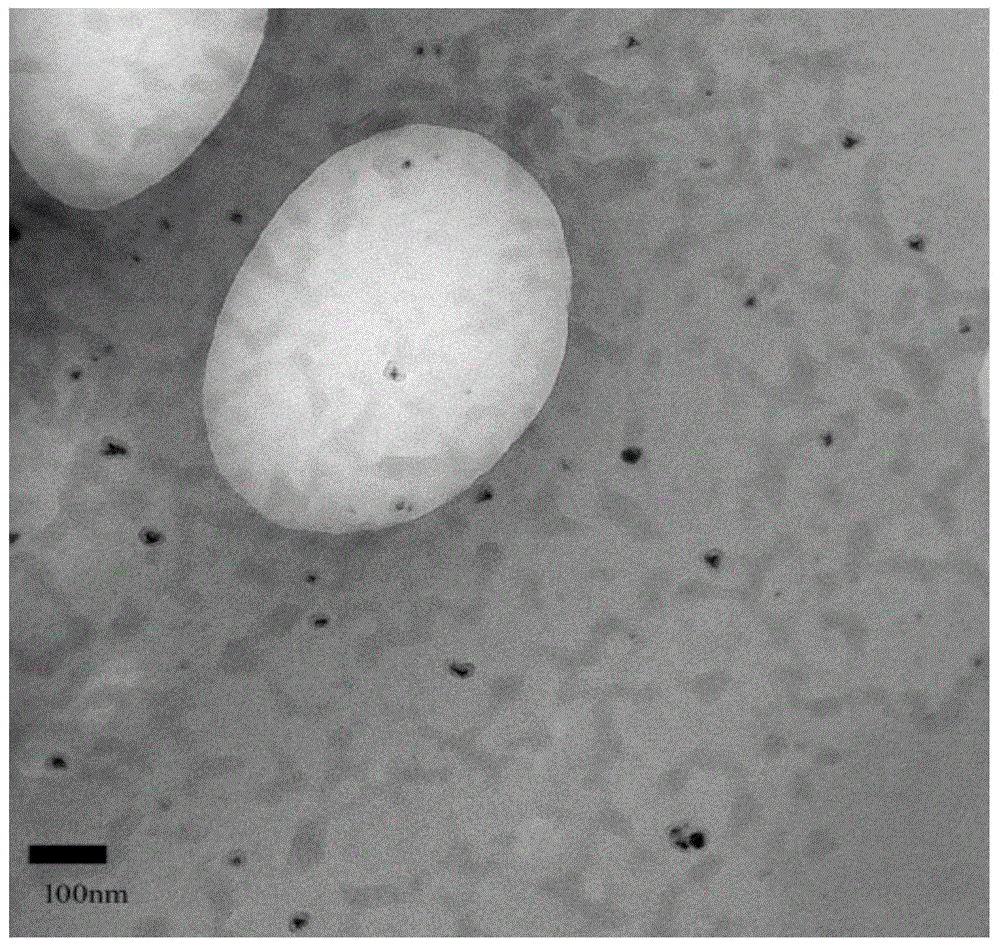A carbon-base fluorescence probe for a targeting living cell mitochondrion and preparation thereof
A fluorescent probe and mitochondrial technology, applied in the direction of fluorescence/phosphorescence, luminescent materials, chemical instruments and methods, etc., can solve the problems of poor water solubility, easy fluorescence quenching, phototoxicity, etc., and achieve small particle size and good photostability , good biocompatibility
- Summary
- Abstract
- Description
- Claims
- Application Information
AI Technical Summary
Problems solved by technology
Method used
Image
Examples
Embodiment
[0028] (1) Preparation and separation and purification of CDs:
[0029] Dissolve 0.3 mol of citric acid and 1.8 mol of urea in 20ml of deionized water, stir evenly, transfer the solution to a hydrothermal reaction kettle, heat in a muffle furnace, and program the temperature to 200°C, the reaction time is 10 hours, and wait to cool down to room temperature Afterwards, the obtained golden yellow solution was concentrated by freeze-drying method, separated and purified with Sephadex G-50 gel column to remove unreacted substances, and then the product was freeze-dried for future use.
[0030] (2) Synthesis and separation and purification of TPP-CDs:
[0031] Weigh 65mg CDs and 41mg TPP respectively, dissolve them in 5ml deionized water and ethanol respectively, add EDC·HCl and NHS to the ethanol solution of TPP under stirring state (molar ratio TPP:EDC:NHS=1:1.1:1.2 ), after activating the carboxyl group for 20 min, the CDs solution was slowly added dropwise to the TPP solution,...
PUM
| Property | Measurement | Unit |
|---|---|---|
| particle size | aaaaa | aaaaa |
Abstract
Description
Claims
Application Information
 Login to View More
Login to View More - R&D
- Intellectual Property
- Life Sciences
- Materials
- Tech Scout
- Unparalleled Data Quality
- Higher Quality Content
- 60% Fewer Hallucinations
Browse by: Latest US Patents, China's latest patents, Technical Efficacy Thesaurus, Application Domain, Technology Topic, Popular Technical Reports.
© 2025 PatSnap. All rights reserved.Legal|Privacy policy|Modern Slavery Act Transparency Statement|Sitemap|About US| Contact US: help@patsnap.com



